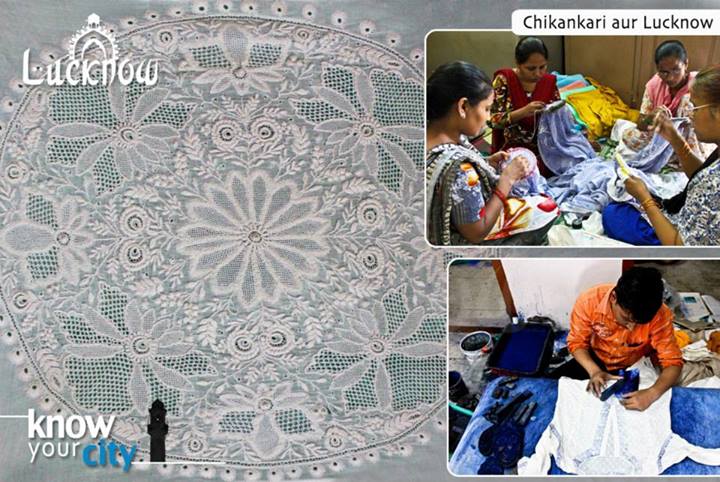Chikankari aur Lucknow
The timeless beauty of chikan and its elegance traces its origin to Lucknow. Admired by people all over the world, this craft has trickled down to every section of the fashion world. The word ‘chikan’ has been derived from Persian language where it means needlework on colourless muslin called ‘tanzeb’. The origin of chikankari has undergone numerous interpretations. It is believed that the chikankari broadly refers to the period of Nawabs. Sharar mentions in his book ‘Guzishta Lucknow’ that it was during Nasir ud Din Haidar’s time, a four cornered headgear was invented. To make it look fashionable the panels of the cap were covered in thin muslin upon which kaamdani or gold and silver crescents and designs were stitched in different colours. Popularity of chikankari is also linked to the Mughal harems. Jehangir’s wife Noor Jehan was inspired by Turkish embroidery which led to the innovation of chikankari.
Self Employed Women’s Association ( SEWA Lucknow ) is a much sought after organisation, promoting chikankari with a noble cause. Ms Runa Banerjee and the women karigars of SEWA are successfully able to restore the dignity of the craft as well as increase excellence in their vocation and sustaining self. There are number of steps that a karigar has to follow to create a delicate and beautiful Lucknow chikan garment. The craft is first traced on fabrics like cotton, linen, georgette and chiffons using a wooden pattern coated with neel (indigo). The outlines are then embroidered by using different style of stitches to give a sheer look. There are six basic stitches and over 32 other traditional stitches used in combinations. It includes bakhiya (shadow work), ulti bakhiya, zanjeer (chain stitch), jaali, murri, phanda, keel kangan, chana patti, dhaniya patti, ghas patti, hool, rahet, banarasi, khatau, turpai, darzdari, pechani, bijli, makra, kauri, hathkati, kapkapi, rozan, taj mahal, jora, bulbul, meahrki, baalda, sazi, sidhaul, etc. Apart from clothing, one can see chikankari in home apparels and kids wear also.
In 2008 the Lucknawi chikan was accorded the Geographical Indication (GI) under the Geographical Indication Registry (GIR), recognising Lucknow as the exclusive hub for chikankari. There have been constant efforts by the karigars to include newer designs in chikankari and keep the art alive. Whether moderately priced or exorbitantly, chikan work is an all time classic. One can wear it on all occasions be it formal or informal. It is an undeniable fact that Lucknow exhibits India’s finest chikan embroidery, spreading glory all around !
Credit : Intern – Nishita Banerjee

